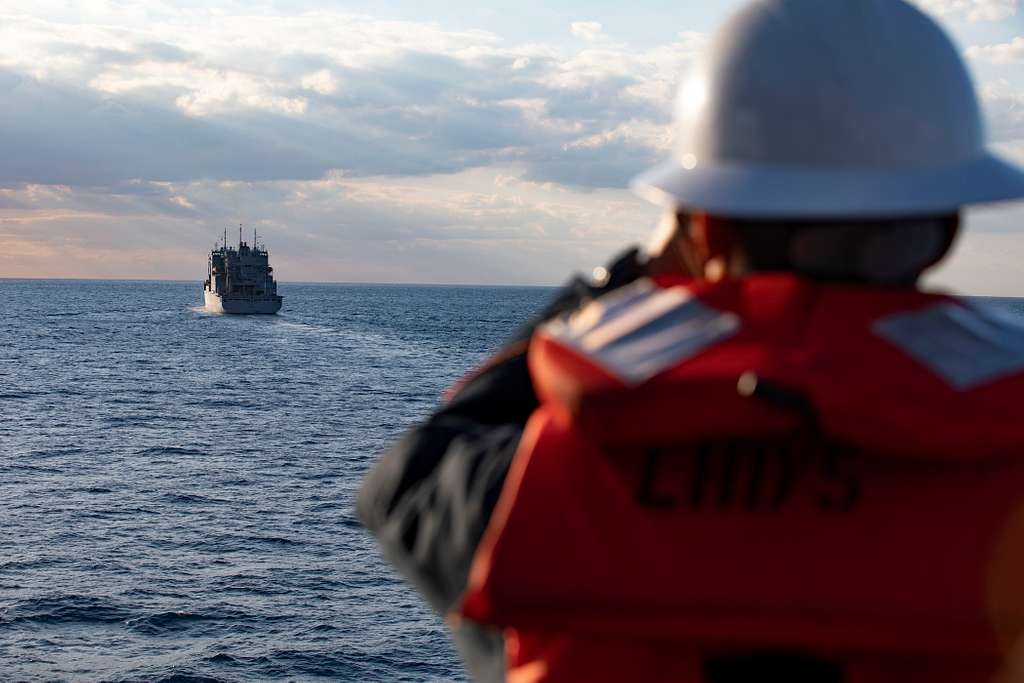The increasingly complex intertwining of geopolitical and economic/commercial issues currently makes any kind of forecast on the future of shipping difficult, if not hazardous. 2024 looks like it’s going to be a complex year for people in the industry.
In the Middle East, the situation continues to be dramatic. The militarization of the Red Sea, and the decision by the US and Britain to step up attacks against Houthi targets in Yemen, has not helped to reduce attacks on merchant shipping. On the contrary, they have become even more dangerous and destructive.
Last Saturday, Yemeni rebels targeted a number of US destroyers in the Red Sea and the Gulf of Aden, using 37 drones. Prior to that, the attack on the merchant ship, the True Confidence, led to the death of two Filipino seafarers plus a person of Vietnamese origin and two crewmembers being wounded. The same fate befell the Rubymar, which was attacked in the Red Sea and sank off the Hanish Islands.
Given the current uncertainty, it is highly unlikely that shipping companies will decide to resume transits from Suez. The circumnavigation of Africa still remains the safest route even if redirecting traffic to the Cape of Good Hope means longer sailing times along the east-west routes between Europe, the USA and the Far East, with a direct negative impact on sticking to schedules and hence on respecting arrival times.
In January, only 33.8% of the ships engaged in trade between the Far East and the US East Coast arrived at their destination on time. The other two-thirds experienced delays of just under six days.
Nevertheless, analysts point out that container shipping rates have been falling steadily for about three weeks now. According to Drewry, last week, spot market freight rates fell by 6% from the previous week, to $3287 per FEU. A sign that the situation is beginning to stabilize. A sign that that carriers are gradually managing to meet the need for additional capacity that has become necessary due to rerouting from Suez and longer east-west sailing times.
This is what emerged from the Transpacific Maritime Conference, held in California last week. According to Vespucci Maritime CEO Lars Jensen, despite a general hesitation among shippers due to global uncertainties, it was clear from the conference that contract tariffs for transpacific trade from Asia to the US west coast would not increase substantially from last year’s level. He points out that this trade route clearly does not pass through the Red Sea and the Suez Canal. He specifies that, if there was a significant systemic shortage of capacity on African round trips, carriers would have to remove ships from the Pacific and put them on services around Africa. Such an option would have clearly impacted the transpacific route, exerting strong bullish pressure on annual contracts. The fact that this is not happening, in Jensen’s view, means that we have sufficient capacity.
The CEO of Sea Intelligence, Alan Murphy, is of the same opinion. As he sees it, transport service networks are slowly adapting to the new reality of routes around Africa. The market analyst also points out that carriers now have the opportunity to use larger and more efficient ships on average to compensate, at least partially, for rising slot and fuel costs.
However, since January 2023, the average vessel size along the Asia-North Europe and Asia-Mediterranean routes has not increased much and has now stabilized at around 17/18 thousand TEUs for the former and 12/13 thousand TEUs for the latter. A clear sign that carriers prefer to deploy smaller units, with the certainty of completely filling them or almost, rather than larger, more efficient but higher capacity boxships. A half-empty 20,000 TEU ship would in fact have higher slot costs than a full 10,000 TEU ship.
Speaking of costs, reefer container shipping rates have risen significantly over the last few months. In a post on Linkedin, Xeneta CEO Peter Sand pointed out that since December 2023 they have even doubled along the routes between the Far East and the US East Coast.
On March 6th, the spot freight rate for shipping a 40-foot reefer container reached $7370. On this route, the difference in cost between a reefer container and a regular (dry) container reached $1,700, $550 more compared to three months ago.

Translation by Giles Foster

